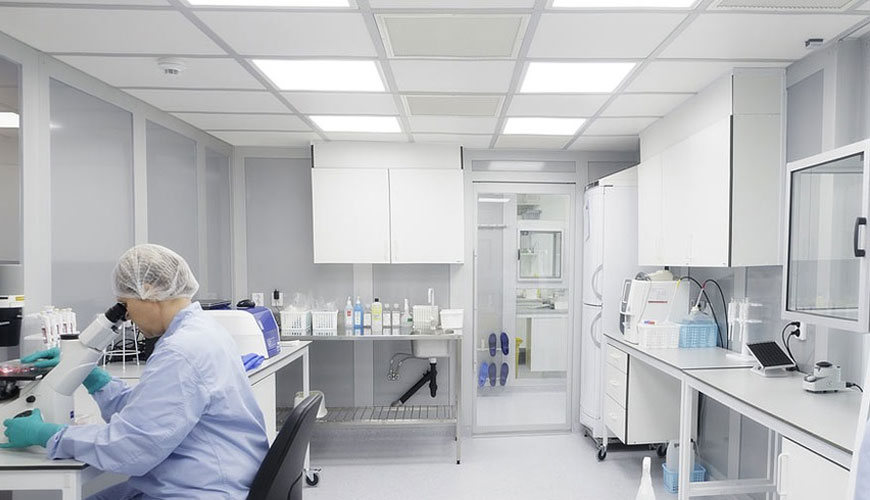Current Version of ISO 14644: An Overview
ISO 14644 is an international standard that defines the classification of airborne particulate cleanliness in cleanrooms and controlled environments. The latest version, ISO 14644:2015, was published to provide updated guidelines and methodologies, ensuring that cleanroom environments meet the required cleanliness levels for various industries, including pharmaceuticals, biotechnology, and Electronics.

Classification of Cleanroom Environments
ISO 14644:2015 classifies cleanrooms into different classes based on the maximum allowable particle concentration. It features 9 classes, ranging from Class 1 (the cleanest, allowing no more than 1 particle ≥0.1 µm per cubic meter) to Class 9 (permitting up to 35,200 particles ≥0.5 µm per cubic meter). This classification helps organizations worldwide maintain consistent cleanliness levels.
monitoring and Testing Protocols
The standard outlines specific protocols for monitoring airborne particulate levels. It suggests regular testing at least every six months for cleanrooms operating under stringent conditions. For example, iso 14644-1 requires organizations to conduct particle count measurements at defined locations and times to ensure compliance with the designated class. Adhering to these protocols is critical for maintaining the integrity of controlled environments.

Impact on Industry Practices
The adoption of ISO 14644:2015 has significantly impacted industry practices. According to a survey, about 75% of cleanroom operators reported that compliance with ISO standards improved their operational efficiencies. Furthermore, companies that adhere to ISO 14644 often experience reduced contamination incidents, leading to increased product quality and safety in critical manufacturing processes.
ISO 14644-1: Classification of Airborne Particles
iso 14644-2: Monitoring to Provide Evidence of Cleanroom Performance
ISO 14644-3: Test Methods
ISO 14644-4: Design, Construction, and Start-up
The ISO 14644 Series of Standards

1. Overview of ISO 14644
The ISO 14644 series consists of international standards that specify the classification of airborne particulate cleanliness in cleanrooms. This series is crucial for industries that require controlled environments, such as pharmaceuticals and electronics.
2. Classification of Cleanrooms
ISO 14644-1 outlines the classification of cleanrooms based on the maximum allowable particle concentration. The classifications range from ISO1 (the cleanest) to Class 9, ensuring a systematic approach to maintaining cleanliness levels.

3. Testing Methodologies
ISO 14644-3 provides detailed test methods for assessing cleanroom performance. These methodologies include procedures for measuring airborne particle concentrations, ensuring that cleanrooms meet the required classifications effectively.
4. Design and Construction Standards
iso 14644-4 focuses on the design, construction, and startup of cleanrooms. It outlines key considerations for creating effective cleanroom environments, ensuring that they are built to facilitate compliance with cleanliness standards.
ISO 14644-4 Air Change Rate

1. Calculation of ACR: ISO 14644-4 specifies methods for calculating the air change rate. Typically expressed in air changes per hour (ACH), this metric helps ensure that cleanrooms maintain adequate ventilation and minimize contamination risks.
2. Recommended ACR Values: Recommended ACR values vary by cleanroom class. For instance, ISO5 cleanrooms generally require an ACR of 240 to 480 ACH, depending on the specific processes and equipment used within the environment.
3. Impact on Cleanroom design: The air change rate significantly influences cleanroom design and operation. Properly calculated ACR contributes to efficient airflow patterns, helping to dilute and remove airborne contaminants while maintaining stable temperature and humidity levels.
The Difference Between ISO 14698 and ISO 14644

Focus of ISO 14698
ISO 14698 specifically addresses biocontamination control in cleanrooms and controlled environments. It provides guidelines for assessing and managing biological contaminants, such as bacteria and fungi, which are criticalto maintaining product safety and quality in sensitive environments.
Focus of ISO 14644
In contrast, ISO 14644 primarily deals with the classification of airborne particulate cleanliness. It focuses on measuring and controlling particulate matter rather than biological contamination, highlighting the need for different approaches in cleanroom management.

Complementary Standards
Both ISO 14698 and ISO 14644 serve complementary roles in cleanroom operations. While ISO 14644 ensures that particulate levels are controlled, ISO 14698 addresses the biological aspect, providing a comprehensive framework for contamination control.
Application in Industries
ISO 14698 is often utilized in industries where biological contamination poses significant risks, such as pharmaceuticals and healthcare. On the other hand, ISO 14644 is widely adopted in electronics and aerospace, where particulate control is paramount.
What is the BS EN ISO 14644-4?

Design Considerations
This standard emphasizes appropriate design features for cleanrooms, including airflow patterns, materials, and finishes. Proper design is essential to minimize contamination risks and maintain operational efficiency in controlled environments.
Construction Standards
BS EN ISO 14644-4 outlines specific construction standards, ensuring that cleanrooms are built to facilitate cleanliness and operational requirements. Construction practices must adhere to these guidelines for effective cleanroom performance.
Operational Startup Guidelines
The standard also covers operational startup procedures for cleanrooms. This includes protocols for testing and validating cleanroom conditions prior to full operation, ensuring that all systems are functioning correctly to meet cleanliness requirements.
 +86 18186671616
+86 18186671616 Jason@cleanroomequips.com
Jason@cleanroomequips.com
 MENU
MENU














